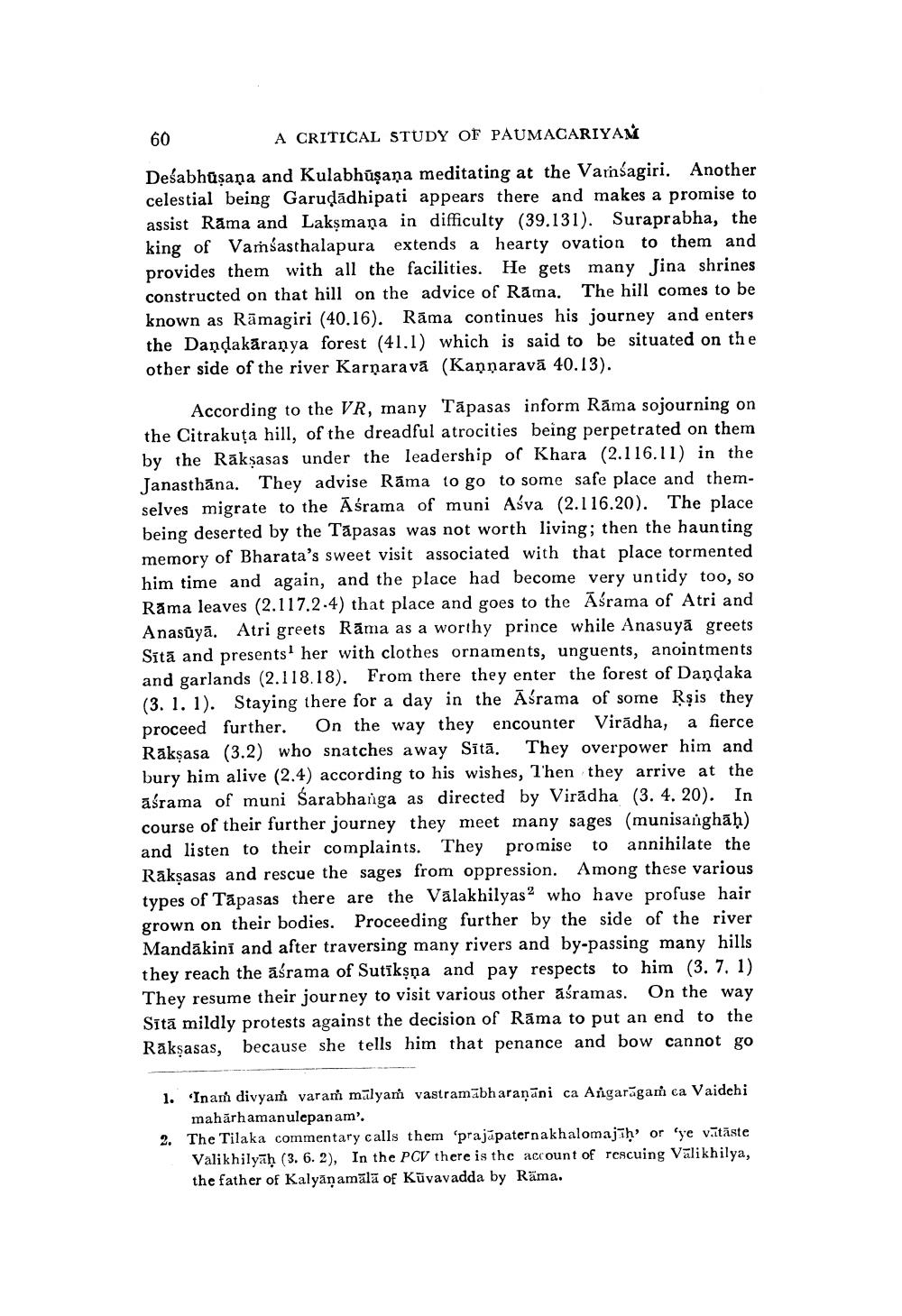________________
60
A CRITICAL STUDY OF PAUMACARIYAM
Deśabhūsaņa and Kulabhūşaņa meditating at the Varnsagiri. Another celestial being Garudādhipati appears there and makes a promise to assist Rāma and Lakşmaņa in difficulty (39.131). Suraprabha, the king of Vamsasthalapura extends a hearty ovation to them and provides them with all the facilities. He gets many Jina shrines constructed on that hill on the advice of Rāma. The hill comes to be known as Rāmagiri (40.16). Rāma continues his journey and enters the Daņpakāraṇya forest (41.1) which is said to be situated on the other side of the river Karṇaravā (Kannaravā 40.13).
According to the VR, many Tāpasas inform Rāma sojourning on the Citrakuta hill, of the dreadful atrocities being perpetrated on them by the Rākşasas under the leadership of Khara (2.116.11) in the Janasthāna. They advise Rāma to go to some safe place and themselves migrate to the Aśrama of muni Aśva (2.116.20). The place being deserted by the Tapasas was not worth living; then the haunting memory of Bharata's sweet visit associated with that place tormented him time and again, and the place had become very untidy too, so Rāma leaves (2.117.2.4) that place and goes to the Aśrama of Atri and Anasūyā. Atri greets Rāma as a worthy prince while Anasuyā greets Sita and presents' her with clothes ornaments, unguents, anointments and garlands (2.118.18). From there they enter the forest of Dandaka (3. 1. 1). Staying there for a day in the Aśrama of some Rșis they proceed further. On the way they encounter Virādha, a fierce Raksasa (3.2) who snatches away Sitā. They overpower him and bury him alive (2.4) according to his wishes, Then they arrive at the aśrama of muni Sarabharga as directed by Virādha (3. 4. 20). In course of their further journey they meet many sages (munisarighāḥ) and listen to their complaints. They promise to annihilate the Raksasas and rescue the sages from oppression. Among these various types of Tāpasas there are the Vālakhilyas2 who have profuse hair grown on their bodies. Proceeding further by the side of the river Mandākini and after traversing many rivers and by-passing many hills they reach the aśrama of Sutīkşņa and pay respects to him (3. 7. 1) They resume their journey to visit various other aśramas. On the way Sītā mildly protests against the decision of Rāma to put an end to the Raksasas, because she tells him that penance and bow cannot go
1. Inari divyan varan malyam vastramabharaṇāni ca Arigarăgam ca Vaidehi
mahārhamanulepanam'. 2. The Tilaka commentary calls them 'prajāpaternakhalomajih' or 'ye vātāste
Valikhilyāh (3. 6. 2), In the PCV there is the account of rescuing Valikhilya, the father of Kalyānamālā of Küvavadda by Räma.




